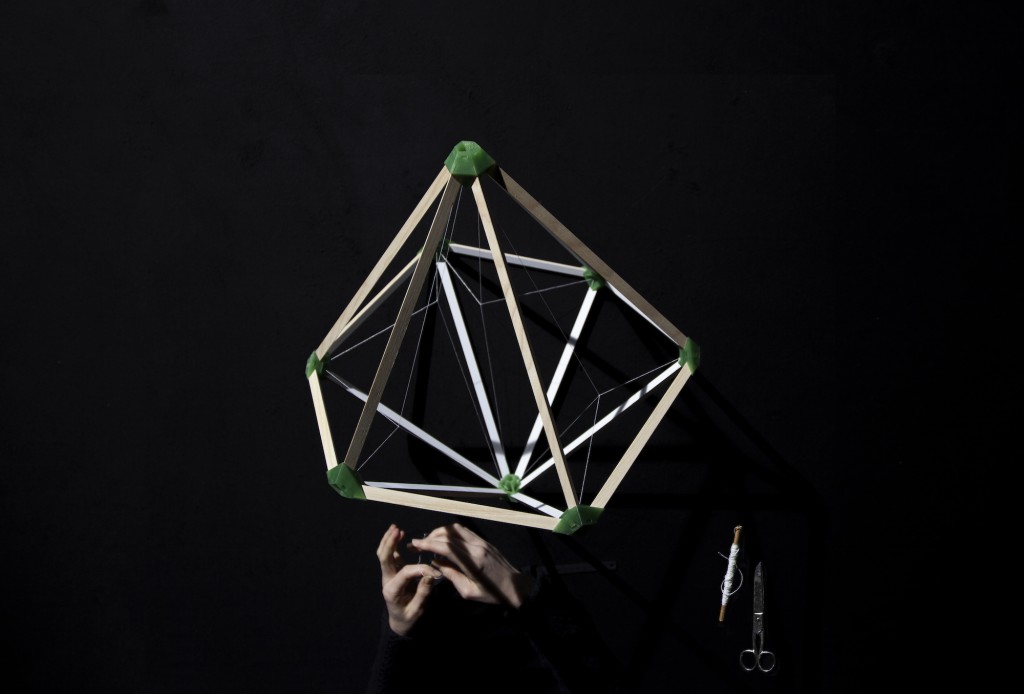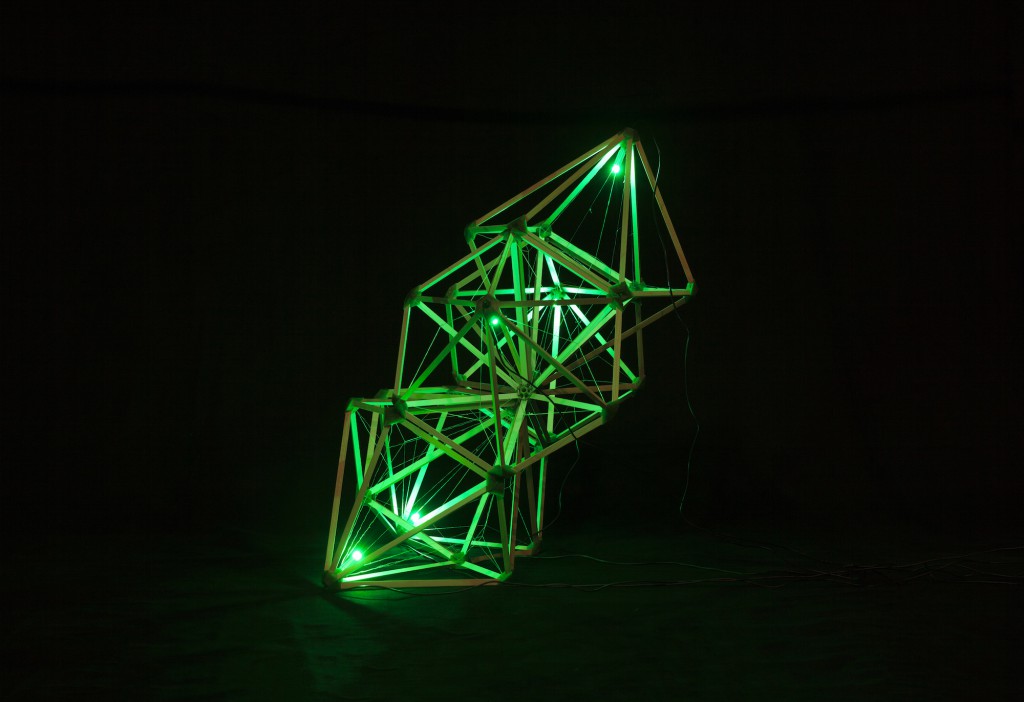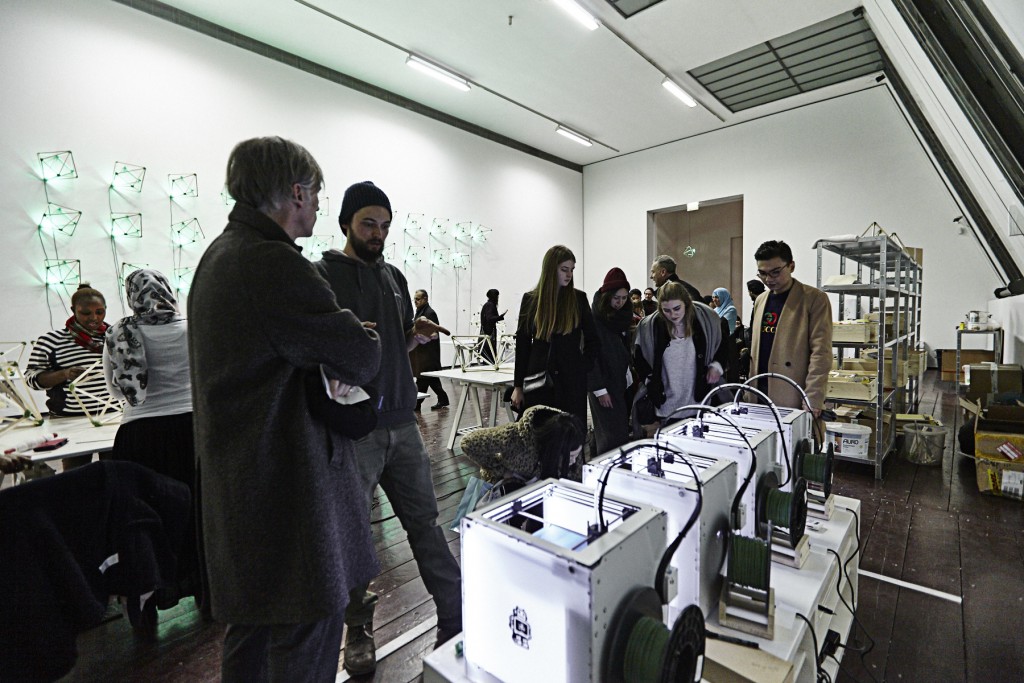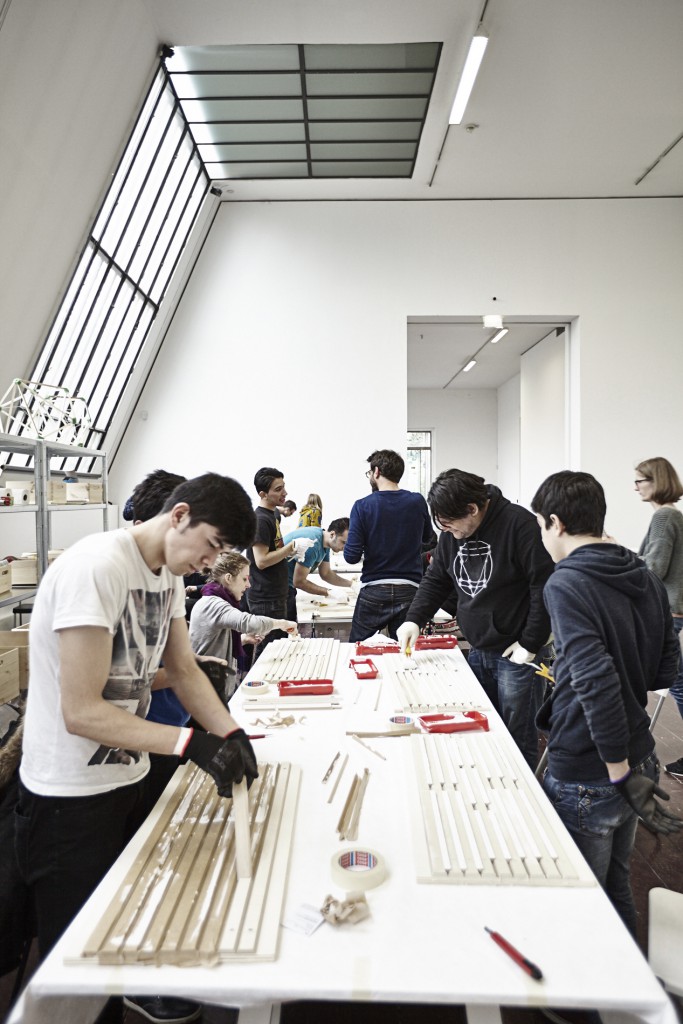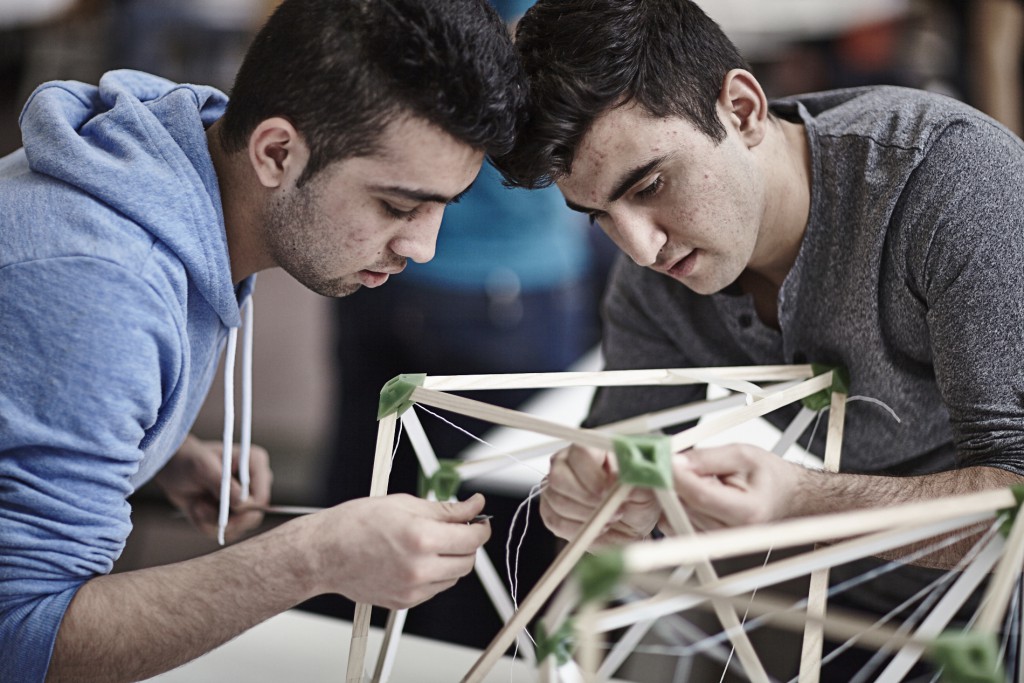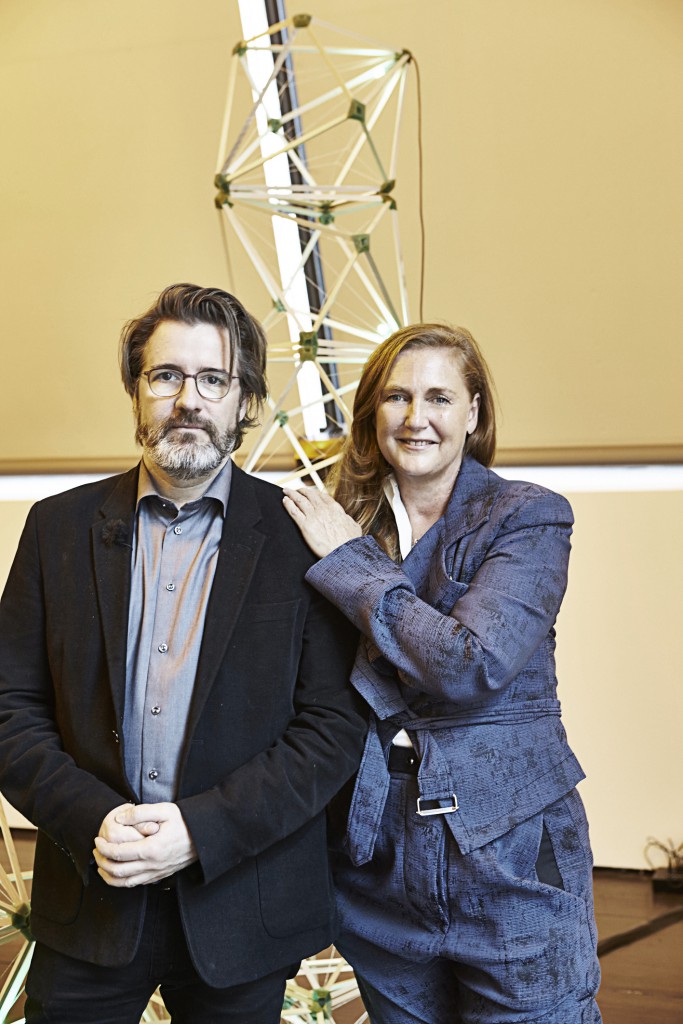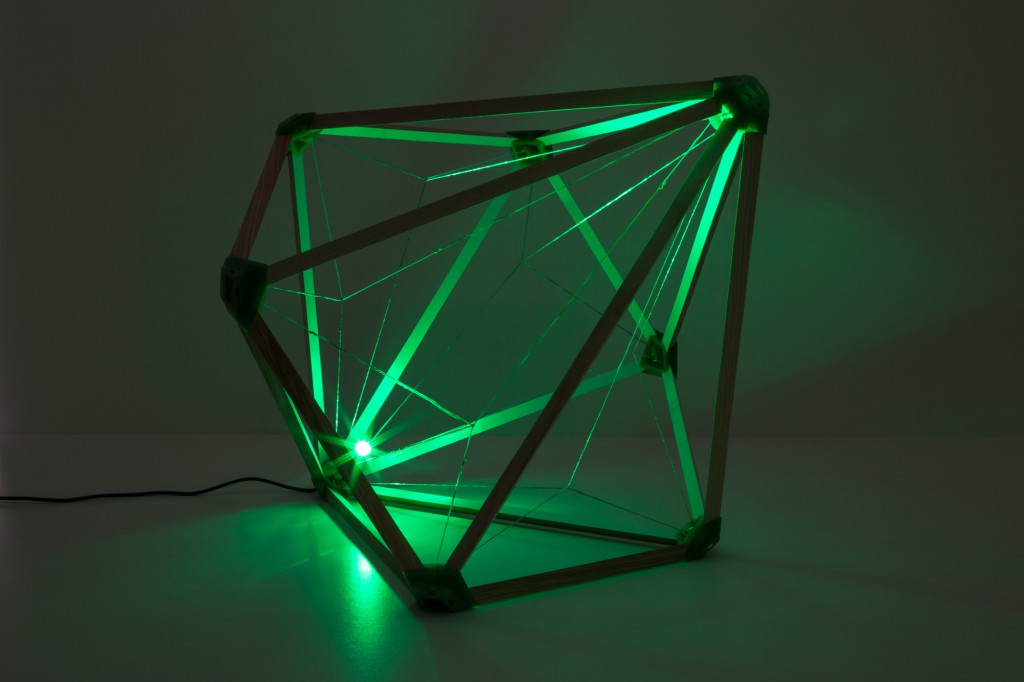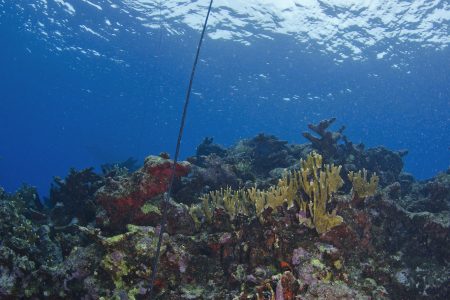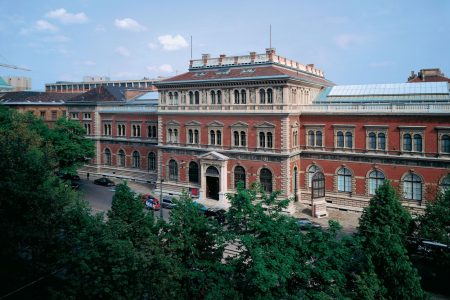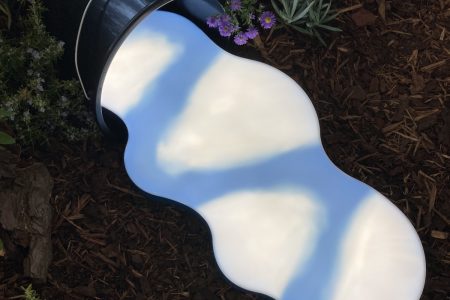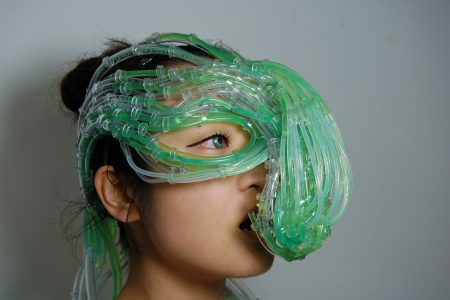Olafur Eliasson on Green Light at TBA21
Known for his sublime light-based artwork, the Berlin-based artist shares the story behind the socially conscious initiative in Vienna.
Not content to simply raise awareness about urgent social issues, Olafur Eliasson‘s latest project is a collaborative effort to do something about them. Until 6 June, the Thyssen-Bornemisza Art Contemporary (TBA21) is home to the “Green Light” workshop, in which refugees, migrants, and students join the TBA21 community to collaborate on assembling a polyhedral luminaire. An emerald LED illuminates the slim wooden struts, fastened with 3D-printed joints (made from recycled plastic), to the overall effect of a crystalline space frame. The monochromatic lamp is a straightforward metaphor for accepting refugees, at once a physical means of “shedding light” on international asylum laws and a highly participatory social initiative in the Vienna institution.
The “Green Light” launched on 12 March, hot on the heels of Baroque Baroque, a solo exhibition of the Danish-Icelandic artist’s oeuvre in the Belvedere Winter Palace. The TBA21 subsequently hosted a day-long “15 Acts of Participation” public event. The Berlin-based artist shares the story behind the “Green Light”:
TLMag: Can you briefly explain how the “Green Light” project came about?
Olafur Eliasson: It began in conversation with TBA21 and Francesca Habsburg, who is an old friend of mine. Francesca is an extraordinary collector and she passionately believes in doing something with art that transcends its boundaries. In fact, Francesca was really the driving force behind this project. It was a true collaboration with her and the team on the ground in Vienna, who navigated the tricky bureaucratic terrain. During the planning process, they discussed the project in depth with the local aid organisations that they partnered with — Georg Danzer Haus and Caritas — who then brought in a new perspective and contributed new ideas.
TLMag: How does the Green Light project complement the Baroque Baroque exhibition that preceded it?
O.E.: Originally we had planned to show a number of artworks at TBA21 – Augarten at the same time as the Baroque Baroque exhibition; it was meant to be more closely related to the show at the Winterpalais. In fact, the idea of setting up a workshop for producing artworks was already there at the beginning, but then it became clear to Francesca and I that this was a perfect opportunity to address the refugee crisis. And so we took some more time to do it properly and to address the incredibly complex legal questions.
TLMag: The metaphor is quite straightforward, but the lamp itself — beautiful though it may be — belies the broader context of social integration and civic engagement. How do you express the manifold of geopolitical issues beyond the material outcome?
O.E.: It is important to emphasise that the lamp is only a small part of the larger project. In fact, it is an invitation to dialogue, and brings people into contact. It is not so much a question of what the lamp means as what it does — within the broader context.
TLMag: To what degree is the work site- or moment-specific? Are you looking to conduct similar workshops in other cities or settings?
O.E.: We are considering some ways of taking it to other locations, but, more generally, I would love to see it as a methodology that could be picked up by others; you could organise a similar workshop at a refugee camp, at a school, university, or public library. In fact, I would love to see governments and policy makers adopt creative approaches to welcoming refugees and addressing the concerns of their populations.
TLMag: And of course a number of your other recent projects, such as Little Sun, are socially conscious endeavors — what else are you working on at the moment?
O.E.: [Yes, there was also] Ice Watch, which I did in Paris and Copenhagen to mark the urgency of climate change. Since you bring up Little Sun, I should mention that we are releasing the Little Sun Charge, the mobile phone charger and lamp, this month.
